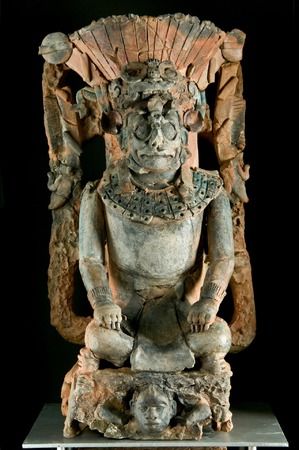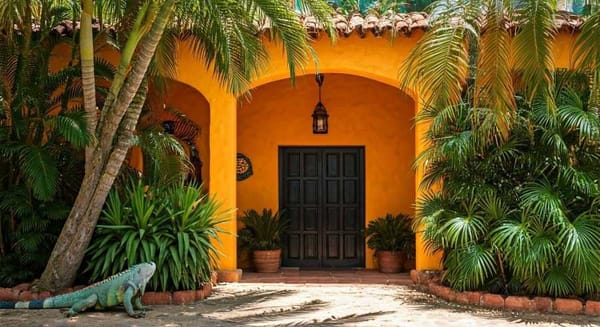Jaguar, the lord of the jungle and the largest predator in the Americas
In Mexico, the jaguar is distributed from the tropical rainforests of southeastern Mexico to the Rio Grande in the Gulf and in the Sierra Madre Occidental.

Its strong muscles and large canines, its agile and accurate hunting movements, have made it the protagonist of many legends. Since ancient times the Olmecs worshipped it, and among the Mexica warriors, it was a symbol of courage. For the Maya, the jaguar was a god and was called Balam.
The fact that throughout history man has admired this great cat has not been enough to allow it to maintain its populations in suitable conditions. Like most of the planet's large carnivores, this American feline has suffered the consequences of habitat destruction and hunting for its beautiful fur. It has also been persecuted due to a certain bad reputation as an aggressor of livestock and, sometimes, of humans.
The jaguar's historical range covered from the southwestern United States to southern Argentina, but for the reasons explained above, its populations have been declining and it is currently found only in some parts of its original range from Mexico to the southern cone. The Amazon basin is considered to be the region where it is found in the greatest abundance. Jaguars tend to inhabit territories with dense vegetation cover, access to water, and sufficient prey, but can also inhabit drier ecosystems.
In Mexico, they live in all coastal states except Baja California and Baja California Sur, and although it was considered extinct in Tamaulipas, a recent report indicates the existence of a small population in that state. It is known that in Mexico the largest populations of jaguars are found in the south and southeast, mainly in the states of Campeche, Chiápas, Oaxaca, and Quintana Roo. However, both in Mexico and in Central America they are only found in the third part of the territory they originally occupied, when they were abundant and of enormous significance among pre-Hispanic cultures.
According to some scientists, the species Panthera onca (the jaguar) has five subspecies in Mexico: arizonensis, centralis, hernandesii, veraecrucis, and goldmani. Other specialists suggest that the eight subspecies recognized in the Americas could be reduced to three. The size from the snout to the base of the tail of female jaguars ranges - depending on the subspecies - between 1.57 and 2.19 meters and in males between 1.72 and 2.41 meters. The subspecies inhabiting the Yucatan Peninsula is said to be one of the smallest.
Because of their position at the top of the trophic pyramid in the American rainforests, jaguars are not naturally abundant animals. Like other predators, jaguars play a fundamental role in the dynamics of ecosystems, influencing the evolution of prey species and acting as a buffer for the increase in their populations. If jaguars were to disappear, these populations would be very large and would compete more intensely with each other.
The creation of natural protected areas in certain regions inhabited by jaguars has been an important step for their conservation. Some of them are the biosphere reserves of Calakmul, Montes Azules, El Triunfo Sian Ka'an, and Chamela-Cuixmala.
The loss of their habitat increases the number of jaguars that are forced to live in unsuitable environments. These individuals are more likely to come into contact with domestic animals and become problems. This loss of habitat also goes hand in hand with a decrease in the populations of their natural prey, a situation that is aggravated by uncontrolled hunting. If prey populations decline drastically, the jaguar cannot survive without resorting to other prey, including domestic livestock.
There is an interesting study on jaguar feeding, carried out in the Calakmul Biosphere Reserve in Campeche. It was based on the analysis of the excrement of jaguars that roam the paths of the Reserve's medium sub evergreen and low deciduous forests. It was established that they prefer young animals of species such as the collared peccary, coati, and temazate and that they also feed on tepezcuintles, arboreal anteaters, as well as a species of turtle and another species of snake. In other regions and countries, the jaguar's diet is different; in Peru, for example, reptiles make up 33% of its diet.
Jaguars are said to be a problem for farmers and ranchers, due to their aggression towards livestock or even humans. However, it is known that sometimes they are unjustifiably accused to hunt them and sell their skin. Hunters also pose a danger to these magnificent animals by killing them without the slightest respect for the Official Mexican Standard, which establishes that the jaguar is an endangered species and requires its protection.
Native to the Americas
Jaguars can swim long distances and cross fast-flowing rivers. They roam the roads and often look for prey - both day and night - near watercourses, where their presence is immediately revealed by the restless reactions of wildlife. They are native to the Americas, where more than 85 species serve as food.
There are some reports of jaguar attacks on humans, but they have not become habitual hunters of humans, as has been the case with some tigers in Asia.
In some specimens, there is the phenomenon of melanism, that is, the excess of black pigment in the fur, so that instead of the yellow skin mottled with black that characterizes them, they have a black coloration, although it is not difficult to detect the aforementioned spots in the sun.
The gestation period is about 100 days. They give birth to one to four cubs in caves and other protected places. The young open their eyes a few days after birth. They follow their mother when they are more than six weeks old and the lactation period lasts five to six months, although they start eating meat when they are three months old; they remain by their mother's side for more than a year and a half.
State of conservation
To carry out an integral jaguar conservation program, several aspects must be taken into account. A jaguar conservation program should be based on regional ecological management programs that take into account the existence of extensive protected areas. The jaguar can also inhabit areas with a certain degree of disturbance, as long as the forest cover and natural prey are preserved. Examples of possible human activities in these areas include selective logging, chicle gum extraction, palm leaf-cutting, and hunting of some species.
Other necessary measures include the creation of livestock management programs, restricting livestock access to forested areas, and preventing cows and calves from grazing freely in pastures near forests. It is also important to restrict hunting in forested areas surrounding pastures for species known to be natural prey for jaguars. And, of course, a stricter application of the legal provisions for their protection is essential. The possibility of commercializing their skin or cubs must be eliminated.
Despite the efforts of some researchers, there is still little data on jaguars, both in Mexico and in other countries, so more studies are needed to learn more about them. However, the scarcity of information cannot be a cause for silence. The transformations that the habitats of these beautiful mammals suffer every day, and the dangers related to their conservation, are known. Although there is no evaluation of the jaguar in Mexico, it is clear that a global conservation program is needed, since isolated measures have not been sufficient. In the meantime, vigilance is needed so as not to give in to pressure from hunters who wish to turn the jaguar back into a hunted species.

The jaguar in the cosmogony of the Mesoamerican peoples
The jaguar was an omnipresent character in the cosmogony of the Mesoamerican peoples. It was represented in codices, wall paintings, sculptures, vessels, masks, architectural structures, masks, rituals. We often see anthropomorphic jaguars - sitting or sounding a snail - and we also see men with feline features, like many of the Olmec sculptures. There are jaguar warriors, jaguar children, shamans transformed into jaguars, dances that represent the confrontation with this physical and at the same time supernatural being.
Its scientific name is Panthera onca. Its common name, jaguar, which in Tupi-Guarani language means "the one who hunts in one jump". The Spanish at the time of the conquest called it tiger by association with the Asian feline they knew; this name has persisted to date in many places in Mexico. It is estimated that at the time of the arrival of Europeans to America more than one hundred thousand jaguars were living from the semi-desert areas of North America to the tropical forests of South America. In the book The Jaguar People: The Olmec Archaeology, it is stated that
The jaguar was the basis of the religion and magical beliefs of the Olmecs; it was the totemic or nagual guardian; the symbol of the earth, of night and darkness; ancestor of the rain gods; and inspiration for other peoples who later developed the cult of the tiger gods such as Xipe, Tezcatlipoca, Tlaloc, Tepeyolotli. The worship of the jaguar spread everywhere with time; and contributed to the formation of secret societies that had this animal as a nahual.

Dance of the Tiger - Musical Testimony of Mexico
This is a mime dance in which two dancers perform feline movements covered by a tiger skin and a mask woven from horsehair; they also hold a rattle and a cat's claw -a wooden handle with three turkey feathers-; with the latter, the performers simulate scratching the spectators.
The dance is accompanied by a teponaztle -a wooden horizontal drum of pre-Hispanic origin-, and a reed flute with a turkey feather mouth, which may have the same origin. It seems to be a very old dance with magical content, perhaps that is why it has been banned several times by the Catholic clergy. In our days this magic content is diffuse or, perhaps, secret.
The tiger walks and roars in the mountains, and among the rocks and cliffs, and also in the water, and they say he is prince and lord of the other beasts. He's short and stout and has a long tail. His head is large and his eyes are as bright as coal. (This is how the jaguar was described in the 16th century by the chronicler Fray Bernardino de Sahagún.)
This great cat - belonging to the family of tigers and lions - was unknown to Europeans. The arrival of the Spaniards to the American continent meant both the encounter with a diversity of peoples and the confluence with a variety of animals and plants unimaginable. Among them was the jaguar, a spotted cat that they called a tiger, and whose importance was notorious in Indo-American cultures. It is estimated that at the time of the arrival of the Europeans to America there were more than one hundred thousand jaguars.




